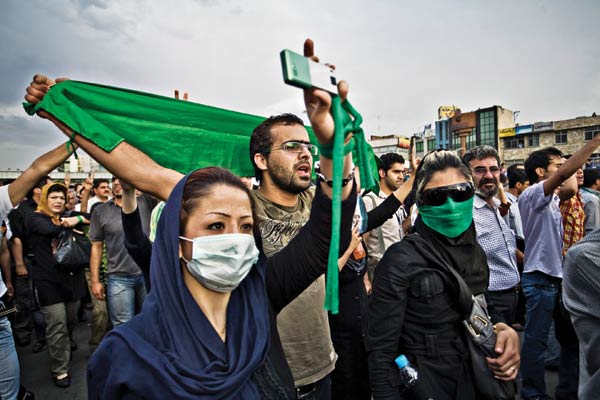We Media: Mainstream News Taps Into Citizen Journalism



Last June, a disputed presidential election sparked a wave of unrest in Iran. The government blocked foreign and domestic news services from covering events, but Iranians used social-networking websites to bypass the censors. Eyewitness accounts of the bloody suppression of protests were sent out minute by minute. When a bystander named Neda Agha-Soltan was shot to death, harrowing footage was captured by cell-phone camera and posted to Facebook.
The coverage of the Iranian election protests was an example of “we media,” a term that encompasses a wide range of mostly amateur activities–including blogging and commentary in online forums–that have been made possible by an array of technologies. There are probably hundreds of millions of active blogs worldwide, though no one has made a definitive count. Social-networking sites like Facebook and Twitter, too, become media platforms when news is propagated through status updates and 140-character tweets that can easily be transmitted to smart phones.
Some enthusiasts believe that such media will render traditional news outlets obsolete. They will always have a superior geographic range, since Internet and cell-phone connections are available in most of the world. They can connect readers directly to sources and documentation without any filtering: celebrities, politicians, and scientists alike now maintain a presence online. Low-cost consumer hardware and free software make it practical to cover subjects whose audiences are too small to support professional journalists.
A more likely scenario, however, is coexistence, or even a symbiotic relationship. Mainstream media websites still draw hundreds of millions of visitors each month (see “Convergence Is King”). In large part this is because media organizations assign stories to journalists–who should be better informed and more articulate than the average blogger if they want to get paid–rather than just hoping that a motivated citizen is following a trend or has happened to get close to an event. And if the strength of “we media” comes from the power of the unfiltered individual, a strength of traditional media organizations is that they bring together teams to create coördinated packages of text, photography, illustration, audio, and video. These organizations, which rely heavily on reputation to distinguish themselves in the market, are also accountable in a way that often anonymous citizen journalists are not.
Citizen journalists and online commenters rely on media organizations for reliable information, while organized media looks to them to drive traffic and occasionally break news. Some media organizations have already tried to reach out: the BBC and CNN, for example, have created systems that allow viewers to submit digital pictures, messages, or videos during major news events. YouTube Direct, a new service from Google, will allow any media organization to set up a similar system. Users can upload a video to YouTube via the media organization’s website, and if it’s approved, it is incorporated into the organization’s coverage and tagged on the YouTube site with the organization’s URL. Media organizations have also begun paying professional journalists to run neighborhood blogs. Typically, these hyperlocal news sites are run by amateurs today. But they are frequently abandoned after a year or two as the bloggers get busy with work and other demands on their time–suggesting that someone whose work is journalism still has a role to play.